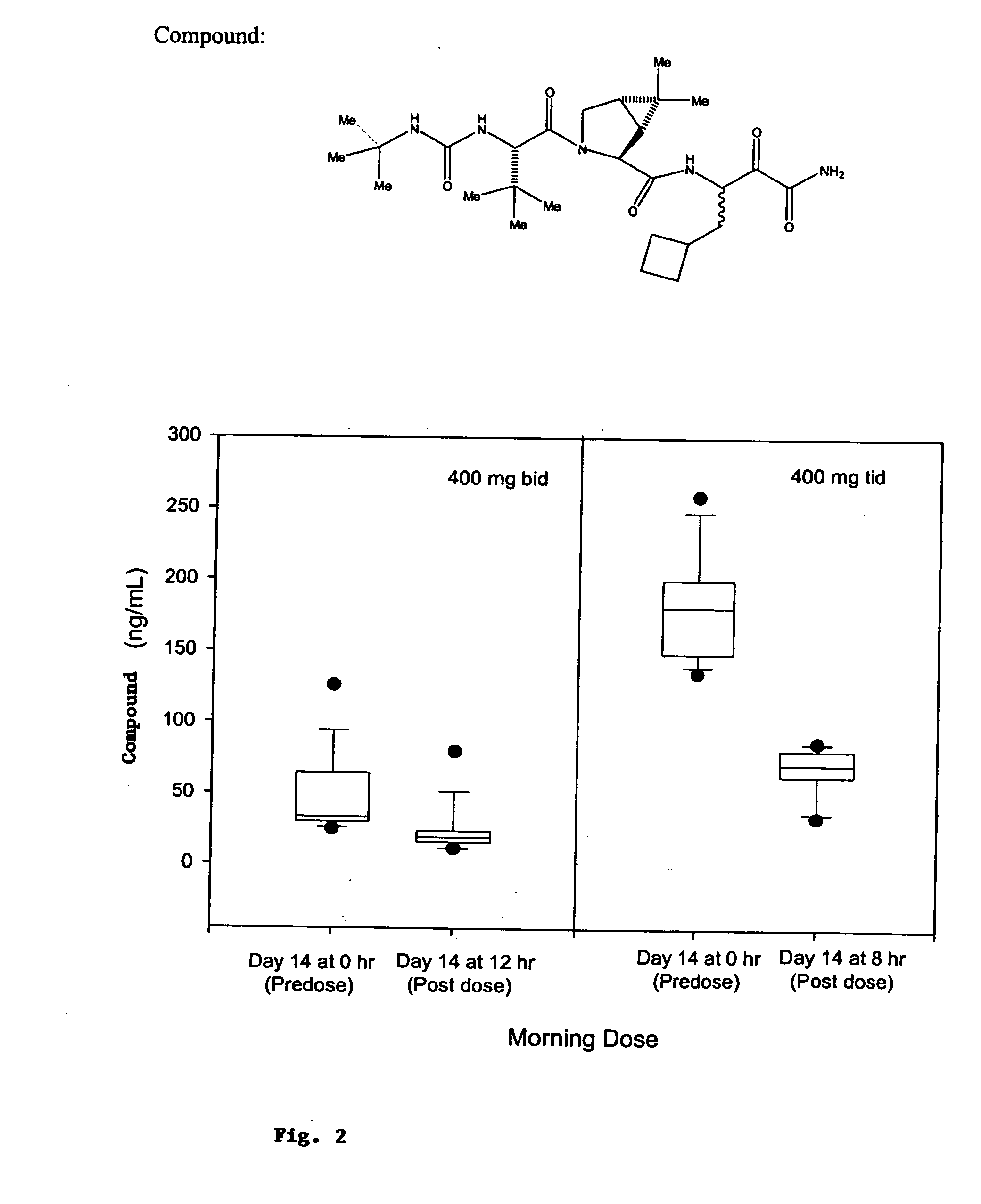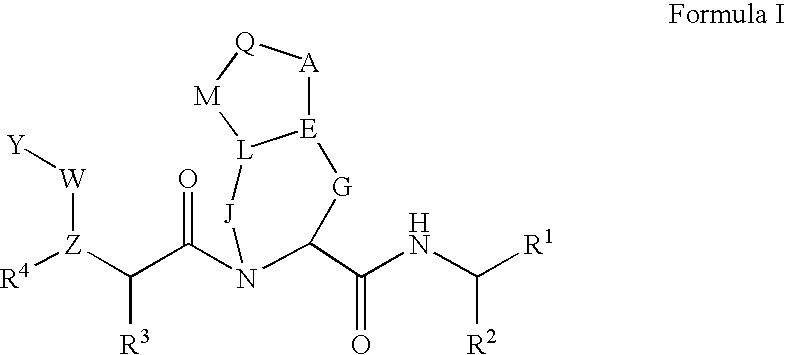Controlled-release formulation
- Summary
- Abstract
- Description
- Claims
- Application Information
AI Technical Summary
Benefits of technology
Problems solved by technology
Method used
Image
Examples
example 1
Preparative Example 1
[0905]
Step A
[0906] A solution of pyrazinecarboxylic acid 1a (3 g) in 150 mL of dry dichloromethane and 150 mL of dry DMF was stirred at 0° C. and treated with HATU (1.4 eq, 6.03 g). L-cyclohexylglycine hydrochloride 1b (1.2 eq, 6.03 g) was added in small portions. Then, N-methylmorpholine (4 eq, 10 mL, d 0.920) was added dropwise. The reaction mixture was gradually warmed to room temperature and stirred for 20 h. All the volatiles were removed under vacuum and the residue was dissolved in 500 mL of ethyl acetate. The organic layer was washed with water (100 mL), aqueous 1N HCl (100 mL), aqueous saturated sodium bicarbonate solution (100 mL), and brine (100 mL). The organic layer was dried over magnesium sulfate, filtered and concentrated under reduced pressure. The residue was chromatographed on silica gel (gradient: acetone / hexanes; 5:95 to 3:7) to afford the product 1c as a white solid.
Step B
[0907] A solution of methyl ester 1c (6.5 g) in 270 mL of a 1:...
example a
Preparative Example A
[0921]
Step 1
[0922] A solution of acid 1 (255 mg) in 5 mL of dry dichloromethane and 5 mL of dry DMF was stirred at 0° C. and treated with HATU (368 mg). The amine hydrochloride 2 (201 mg) was added followed by addition of N-methylmorpholine (0.42 mL). The reaction mixture was gradually warmed to room temperature and stirred overnight. All the volatiles were removed under vacuum and the residue was taken into 100 mL of ethyl acetate. The organic layer was washed with aqueous 1 N HCl (15 mL), aqueous saturated NaHCO3 (15 mL), water (15 mL), brine (15 mL), dried over MgSO4, filtered, and concentrated under reduced pressure to afford the desired product A1. No further purification was carried out for the product.
Step 2
[0923] A solution of Al (360 mg) in 20 mL of a 1:1 mixture of toluene / DMSO was treated with EDCl (1.3 g) and dichloroacetic acid (0.42 mL, d 1.563). Reaction mixture was stirred at room temperature for about 3 h. The reaction mixture was diluted...
example 3
Preparation of Compound of Formula 3
[0975]
[0976] To a cooled solution (0° C.) of the intermediates 1.06 (75.0 mg, 0.2 mmol) and 1.09 (100.0 mg, 0.36 mmol) in DMF (5.0 mL) was added HATU (Aldrich, 76.05 mg, 0.20 mmol), followed by DIPEA (0.102 mL, 6 mmol). The reaction mixture was stirred for two days then warmed up to room temperature, diluted with ethyl acetate (40.0 mL), washed with 5% KH2PO4 containing 0.05 vol. of 1M H3PO4 and brine. Organic layer was dried over MgSO4, filtered and concentrated to dryness. Residue was purified over silica gel using acetone-CH2Cl2 (1:9 to 1:1) to get 8.0 mg of product of formula 3 (6.5% yield); LCMS: (590.1).
[0977] One skilled in the art would understand that other suitable compounds of Formula XVIII can be prepared in a similar manner to that disclosed above.
The Following Experimental Section Applies for the Preparation of the Compounds of Formula XIX:
Synthesis of Preparative Examples
PUM
| Property | Measurement | Unit |
|---|---|---|
| Fraction | aaaaa | aaaaa |
| Percent by mass | aaaaa | aaaaa |
| Mass | aaaaa | aaaaa |
Abstract
Description
Claims
Application Information
 Login to View More
Login to View More - Generate Ideas
- Intellectual Property
- Life Sciences
- Materials
- Tech Scout
- Unparalleled Data Quality
- Higher Quality Content
- 60% Fewer Hallucinations
Browse by: Latest US Patents, China's latest patents, Technical Efficacy Thesaurus, Application Domain, Technology Topic, Popular Technical Reports.
© 2025 PatSnap. All rights reserved.Legal|Privacy policy|Modern Slavery Act Transparency Statement|Sitemap|About US| Contact US: help@patsnap.com



